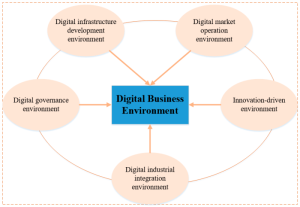
Step right up, ladies and gentlemen! Get ready to explore the thrilling world of consumer goods trends where innovation meets tradition, sustainability dances with technology, and the market never sleeps. Brace yourself for an exciting journey through the ever-evolving landscape of products and services that shape our daily lives.
In this article, we will uncover the current trends in consumer goods, highlight the impact of sustainability, delve into innovative features and technologies shaping the industry, and compare the classic trends with the new wave of modern influences. Get ready to be amazed!
Consumer Goods Trends
Consumer goods trends are constantly evolving to meet the changing demands and preferences of consumers. From innovative features to sustainability practices, these trends play a crucial role in shaping the consumer goods market.
Innovative Features and Technologies
In today’s consumer goods landscape, innovation is key. Companies are integrating advanced technologies such as artificial intelligence, Internet of Things (IoT), and augmented reality to enhance the functionality and user experience of their products. For example, smart appliances that can be controlled remotely through a mobile app or wearable devices that track health metrics in real-time are gaining popularity among consumers.
Impact of Sustainability
Sustainability has become a significant factor influencing consumer goods trends. Consumers are increasingly prioritizing eco-friendly products that are made from sustainable materials and produced using environmentally friendly practices. Companies are responding to this demand by incorporating recycled materials, reducing waste in packaging, and implementing energy-efficient manufacturing processes.
Traditional vs. Modern Trends
Traditional consumer goods trends focused more on mass production, cost efficiency, and limited customization options. In contrast, modern trends emphasize personalized products, unique experiences, and ethical practices. Consumers are willing to pay a premium for products that align with their values and lifestyle choices, driving companies to adapt to these changing preferences.
Chemicals and Allied Products
Chemicals and allied products play a crucial role in the consumer goods industry, serving as key components in the production of a wide range of everyday products. From cleaning agents to personal care items, chemicals are essential in enhancing the quality and functionality of consumer goods.
Importance of Quality Control
Quality control is paramount in the production of chemicals for consumer goods to ensure the safety and efficacy of the final products. Rigorous testing and monitoring procedures are implemented to guarantee that the chemicals meet industry standards and regulatory requirements, safeguarding consumer health and satisfaction.
Examples of Chemical Use
- Preservatives in food products to extend shelf life.
- Fragrances and dyes in personal care items to enhance appeal.
- Cleaning agents for household products to ensure effectiveness.
- Plasticizers in packaging materials to improve flexibility.
Challenges and Opportunities
- Challenges: Stricter regulations on chemical usage, environmental concerns, and supply chain disruptions.
- Opportunities: Innovation in sustainable chemicals, increased demand for eco-friendly products, and advancements in technology for safer production processes.
Construction and Maintenance
Construction and maintenance play a crucial role in shaping the consumer goods market. The materials used in construction directly impact the design and quality of consumer goods. Additionally, maintenance services are essential to ensure the longevity and performance of consumer products. Infrastructure development also plays a significant role in driving consumer goods demand, as it influences accessibility and availability.
Impact of Construction Materials on Consumer Goods Design
Construction materials such as wood, metal, plastic, and glass have a direct influence on the design and functionality of consumer goods. For example, the choice of material for a furniture piece can determine its durability, aesthetics, and environmental impact. Manufacturers often consider the properties of different materials to create products that meet consumer preferences and market trends.
Role of Maintenance Services in Ensuring Consumer Goods Longevity
Maintenance services are essential for ensuring the longevity and performance of consumer goods. Regular maintenance, repairs, and upgrades can extend the lifespan of products such as appliances, electronics, and vehicles. By providing maintenance services, companies can enhance customer satisfaction, reduce product failures, and encourage repeat purchases.
Relationship Between Infrastructure Development and Consumer Goods Demand
Infrastructure development, including transportation networks, utilities, and communication systems, has a direct impact on consumer goods demand. Improved infrastructure can increase access to goods and services, stimulate economic growth, and create new markets for consumer products. As infrastructure projects expand, the demand for consumer goods related to construction, transportation, and technology also tends to rise.
Consumer Goods and Services
Consumer goods and services are closely intertwined in today’s market, with many companies offering both products and the services that complement them. This connection creates a more holistic experience for consumers and can lead to increased customer satisfaction and loyalty.Customer service is essential in the consumer goods industry as it directly impacts the overall customer experience. From pre-sales inquiries to post-purchase support, effective customer service can make or break a company’s reputation.
Providing timely and personalized assistance can build trust with customers and encourage repeat business.
Integration Strategies
Successful integration of consumer goods and services can be seen in subscription-based models, where companies not only offer products but also ongoing services. For example, streaming platforms like Netflix provide access to a wide range of content along with personalized recommendations and customer support. This integration keeps customers engaged and loyal to the brand.
- Amazon Prime: Amazon combines fast shipping services with exclusive deals and access to streaming content through Prime Video, creating added value for customers beyond just shopping.
- Apple Care: Apple offers extended warranty and technical support services for its products, ensuring customers have a positive experience even after the initial purchase.
Consumer Behavior Influence
Consumer behavior plays a significant role in shaping the evolution of consumer goods and services. As consumer preferences and expectations change, companies must adapt their offerings to meet these demands. For example, the rise of e-commerce has led to a greater emphasis on convenience and fast delivery, prompting companies to invest in logistics and fulfillment services to meet customer needs.
Understanding consumer behavior is crucial for companies to stay competitive and relevant in the ever-changing market landscape.
Business Energy

Energy consumption in the production of consumer goods is a significant factor that impacts both the cost and environmental footprint of businesses in this sector. Adopting sustainable energy practices not only helps reduce costs but also contributes to a more eco-friendly operation.
Energy Consumption Patterns
Consumer goods manufacturing processes often require high levels of energy consumption, especially in industries such as textiles, electronics, and food processing. The use of machinery, heating, cooling, and lighting all contribute to the overall energy demand in production facilities.
Sustainable Energy Practices
- Investing in renewable energy sources such as solar or wind power to reduce reliance on fossil fuels.
- Implementing energy-efficient technologies and practices to optimize energy use and minimize waste.
- Participating in energy-saving initiatives and programs to promote sustainability within the industry.
Importance of Energy Efficiency
Energy efficiency is crucial for consumer goods businesses to remain competitive and sustainable. By reducing energy consumption, companies can lower production costs, improve operational efficiency, and reduce their carbon footprint.
Future Trends in Business Energy Management
- Integration of smart technologies for real-time monitoring and control of energy usage.
- Adoption of circular economy principles to minimize energy waste and promote resource efficiency.
- Collaboration with suppliers and partners to establish a more sustainable supply chain with reduced energy consumption.
Business Environment
The business environment plays a crucial role in shaping the operations and strategies of consumer goods manufacturing companies. From regulatory frameworks to environmental policies, businesses in this industry must constantly adapt to external factors to remain competitive and sustainable.
Regulatory Frameworks and Impact
Regulatory frameworks significantly impact businesses in the consumer goods industry, influencing everything from production processes to product labeling and safety standards. For example, strict regulations on the use of certain chemicals in manufacturing can require companies to reformulate their products or find alternative ingredients to comply with safety guidelines. Non-compliance with these regulations can lead to hefty fines and damage to the brand’s reputation.
Adapting to Environmental Policies
Businesses in the consumer goods sector often have to adapt to changing environmental policies to reduce their carbon footprint and operate sustainably. This may involve implementing energy-efficient practices in manufacturing facilities, sourcing raw materials from sustainable suppliers, or investing in eco-friendly packaging solutions. Companies that proactively embrace these changes not only contribute to environmental conservation but also attract environmentally conscious consumers.
Relationship with Pricing Strategies
The business environment, including regulatory constraints and environmental policies, can influence consumer goods pricing strategies. For instance, the cost of compliance with stringent regulations may impact production costs, leading to higher prices for consumers. On the other hand, companies that invest in sustainable practices and environmentally friendly initiatives may be able to command premium prices for their products, appealing to consumers willing to pay more for ethically produced goods.
Final Summary

As we wrap up this rollercoaster ride through consumer goods trends, remember that the market is a dynamic playground where change is the only constant. From sustainability to customer behavior, from traditional to modern, the consumer goods industry continues to captivate and inspire. Stay tuned for more exciting updates on the horizon!
User Queries
What are some key factors driving consumer goods trends?
Factors such as changing consumer preferences, technological advancements, and sustainability initiatives are major drivers of consumer goods trends.
How do traditional consumer goods trends differ from modern ones?
Traditional consumer goods trends often focus on mass production and cost efficiency, while modern trends emphasize personalization, sustainability, and innovation.
Why is sustainability important in consumer goods trends?
Sustainability has become crucial in consumer goods trends due to increasing environmental awareness among consumers and the need for eco-friendly products.





